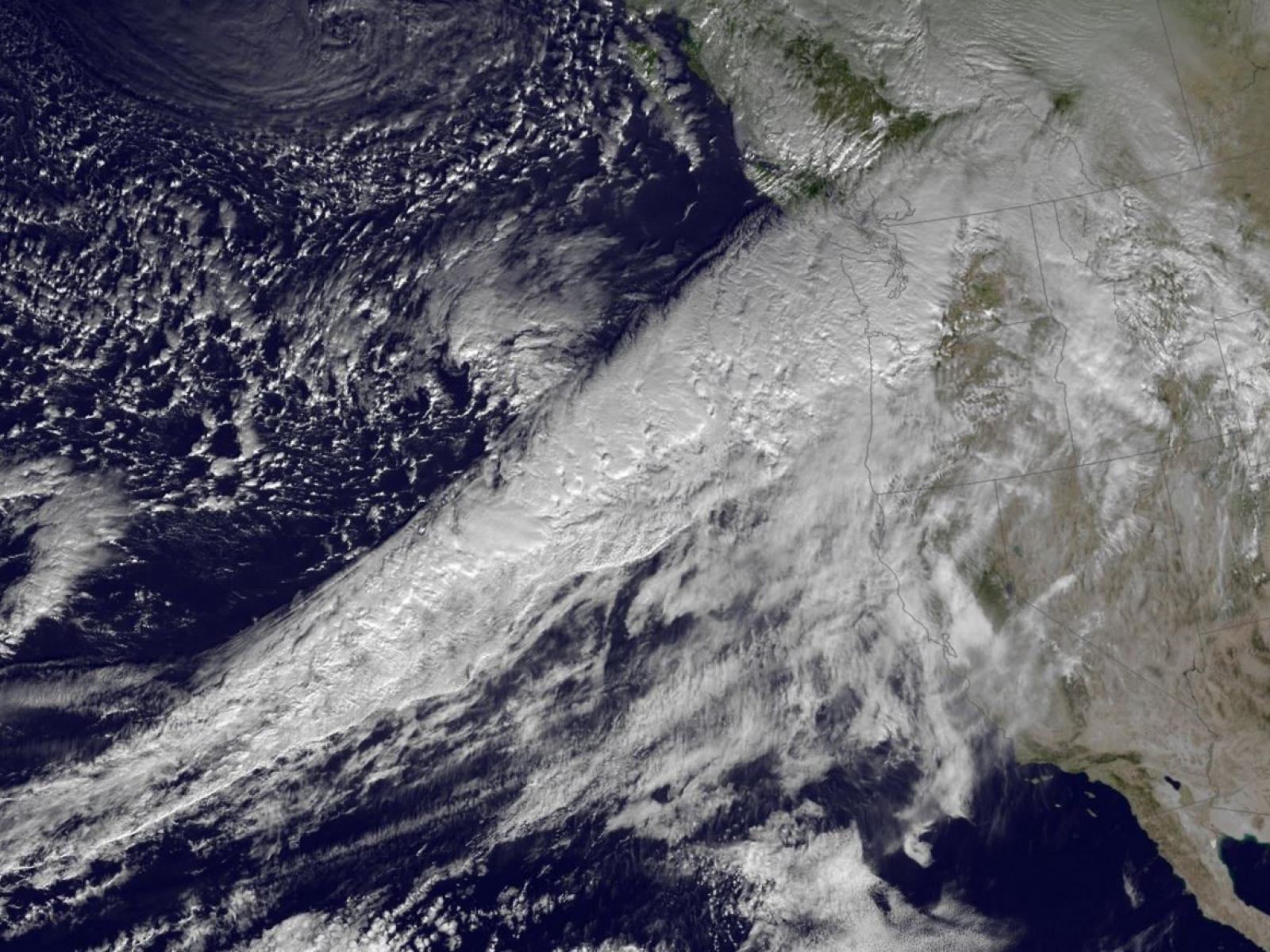Warmer Sea Surfaces Intensify Landfalling Atmospheric Rivers
Increased sea surface temperatures increase the size and intensity of atmospheric rivers

Atmospheric rivers transport large amounts of water vapor to land and can trigger heavy precipitation along coastal land areas.
(Image by the National Oceanic and Atmospheric Administration [NOAA])
The Science
Extreme precipitation on the U.S. West Coast is primarily associated with landfalling atmospheric rivers (ARs), which are long, narrow bands of intense moisture transport in the atmosphere. Previous research shows that remote oceans have effects on ARs, but the role of local sea surface temperature (SST) is not well understood. Recent work revealed that the enhanced evaporation from warmer local SSTs increases the size and intensity of landfalling ARs by increasing available water vapor. Furthermore, warmer local SST destabilizes the atmosphere, resulting in stronger precipitation and amplifying the flood risk from landfalling ARs.
The Impact
As a vital component of the U.S. West Coast water cycle, ARs are responsible for most of the cold season extreme precipitation and coastal region flooding. ARs develop and spend much of their lifecycles over the ocean before making landfall. As SST varies seasonally and from year to year, understanding its impacts on AR intensity and precipitation may improve the prediction of flood risks when ARs make landfall. Furthermore, with future rising temperatures, understanding the relative impacts of variations in remote vs. local SST will aid in projecting changes in ARs and the associated extreme precipitation.
Summary
Researchers analyzed the response of landfalling ARs to different local SSTs along the U.S. West Coast. They conducted two regional climate simulations of the western U.S. and the northeastern Pacific Ocean during 2002-2015. These simulations utlizied the same input and differed only in local SST conditions. The researchers also developed a novel method to track landfalling AR spatial coverage in these high-resolution simulations. In the warmer local SST condition, the west coast experienced more landfalling ARs due to increases in the spatial extent of ARs and the emergence of additional ARs.
The individual ARs exhibited a robust response to local SST warming. With warmer SST, AR landfalling area, landward intrusion distance, and intensity all increase. As most AR moisture is transported from upstream locations, increasing evaporation from the warmer local SST only increases AR intensity by 1.2% with one degree of local SST warming. However, local SST warming destabilizes the atmosphere, so one degree of local SST warming results in an AR precipitation increase of 3%. These findings reveal the important role of local SST in intensifying AR precipitation, with the commensurate increases in flood risk.
PNNL Contact
Xiaodong Chen, Pacific Northwest National Laboratory, xiaodong.chen@pnnl.gov
L. Ruby Leung, Pacific Northwest National Laboratory, Ruby.Leung@pnnl.gov
Funding
This research was supported by the U.S. Department of Energy, Office of Science, Biological and Environmental Research program as part of the Regional and Global Modeling and Analysis and Multi-Sector Dynamics program areas.
Published: November 13, 2020
Chen, X. and Leung, L. R. “Response of Landfalling Atmospheric Rivers on the U.S. West Coast to Local Sea Surface Temperature Perturbations.” Geophys. Res. Lett. 47. (2020) https://doi.org/10.1029/2020GL089254